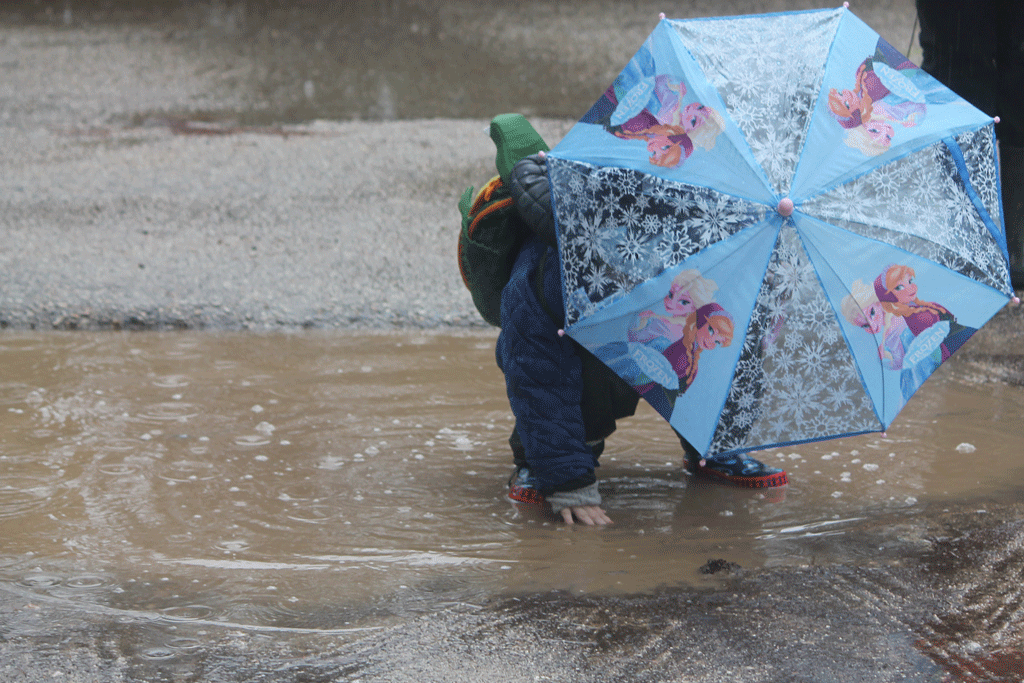The Ice Melts: a science lesson

Today we came across a puddle. That in itself is not unusual. But this is the sort you can’t jump in; it’s not muddy, not wet, but frozen solid.
The girl who found it was thrilled at her discovery. She picked up the “puddle” and ran to show the others. A child’s bucket had been left out full of water; it had frozen and could now be tipped out making an ice castle. We began to look for more: water caught in a leaf and frozen in place; on tools; in drinking troughs; on the duck pond; in a watering can. All of these are familiar objects to the children and the change in state from liquid to solid is both abundantly clear to them and absolutely captivating.
The next experiment is to melt it. The sun is warming up and quickly thawing the ice; droplets of water form on the broccoli leaves. The “puddle” held in the girl’s warm palm is beginning to trickle through her fingers and freeze her hand. We explain that the heat leaves her hand and moves into the ice. This is what melts it: heat moving from one object to another.
A team has set to work breaking the ice on the surface of the duck pond to restore access to the unhappy ducks. The water is revealed underneath and the pieces of broken ice float on top. We note the paradox that the ice is “lighter” than the water.
Later on, we observe this again at the fish pond. A thick layer of ice has formed on top; beneath it, fish can be seen, in a warm(er) body of water. How incredible that nature has provided for pond life like this, protecting it with a sheet of ice and keeping it warm. In this case, unlike the duck pond where we liberally broke the ice, we leave it intact.
